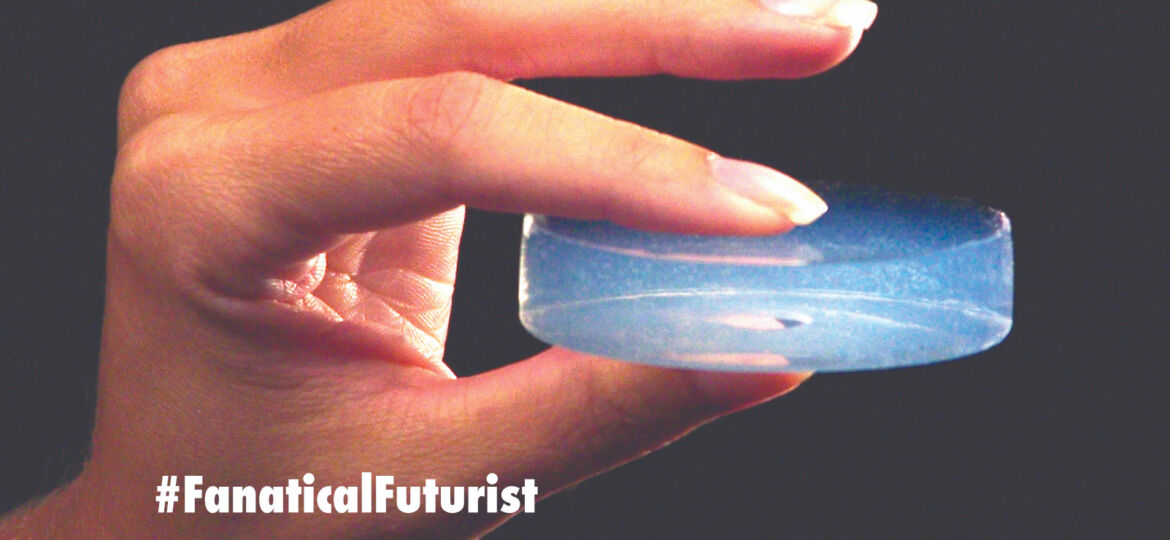
WHY THIS MATTERS IN BRIEF
Tomorrow’s materials will be lighter, stronger and more flexible than todays, and that opens up a whole host of new applications.
The world’s lightest 3D printed structure, a Graphene Aerogel, is so lightweight that it can be placed on top of a cotton ball or the petals of a flower, in fact it’s so light that over 150 bricks of it are still lighter than a gallon of water. But that’s not all. It’s also stronger than steel, just 0.2 percent of the weight, and has the and that makes this amazing new material, whose aerogel cousins are already being used by NASA to create next generation space suits, and other companies, such as Oros to make highly protective thermal sports wear that can protect wearers down to a staggering -321 degrees Fahrenheit, a potential game changer.
The record breaking 3D printed graphene aerogel which Guinness World Records has recently named as “the world’s least dense 3D printed structure,” was developed by Dong Lin, an Assistant Professor of industrial engineering, and his team at Kansas State University, along with colleagues Chi Zhou, an Assistant Professor of industrial engineering at University at Buffalo, and Qiangqiang Zhang, an Associate Professor at Lanzhou University in China. The 3D printed graphene aerogel weighs just 0.5 milligrams per cubic centimetre.
A run down of the new super-material
“Graphene is a revolutionary material and it makes sense that its aerogel form would be just as important,” Lin said, “our 3D printed graphene aerogel has important properties that give the material many applications for better electronics, batteries or semiconductors.”
Not only is the 3D printed material ground breaking, but the way the researchers print the 3D graphene is just as revolutionary. Graphene is a single atom thick sheet of hexagonally coordinated carbon atoms, which makes it the world’s thinnest material and gives it valuable physical and electronic properties.
To 3D print the new material the researchers use a modified inkjet printer that uses two nozzles. They 3D printed droplets of a graphene oxide and water mixture in a freezer on a cold plate that is minus 20 degrees Celsius. This method creates a 3D ice structure of graphene and frozen water, which helps the graphene to maintain its shape, Lin said. Then once printing was complete the researchers placed the 3D material in a freeze dryer, which removed the ice by providing high vacuum and low temperature. What’s left is was a 3D graphene aerogel that maintains its shape at room temperature.
“It has been notoriously difficult to create 3D graphene shapes,” Lin said, and his collaborative team is just the third group in the world to 3D print graphene.
Their new printing method is an improvement because it uses fewer ingredients and only requires graphene oxide and frozen water. Additionally, the two nozzles on the modified printer enable the researchers to create complex shapes with less material, which makes it the lightest material in the world.
“With this 3D printing method, we can control the shape of the graphene aerogel and ideally, we can control the electric and mechanical properties for the aerogels, too,” Lin said, “aerogel is a special material with a lot of applications and that’s why it is one of the hottest materials throughout the world.” And he’s not kidding either. The number of use cases for the new material is staggering and it could be used to create everything from next generation batteries and clothing, to next generation electronics, semiconductors and space systems. All of which is just for starters.

















[…] I showed off how the world’s most insulating material, an aerogel that’s feather light but can be ten times stronger than steel, managed to keep a YouTuber safe when he used it to touch […]